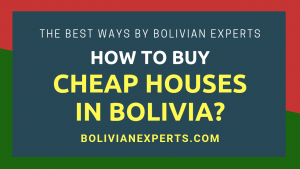Bolivian houses in general are going to look the same as in countries like Ecuador, Peru, Mexico, Colombia, and Paraguay. Bolivia is a 3rd world country, so usually, homes are just basic, they often lack finishing work, and in some cases even don’t have basic home services. But there are exceptions to this, mostly with the houses in the Altiplano.
Houses in Bolivia are usually orange, and brown, because of the lack of finishing work, they’re sticky to each other, without visible gardens or parking. In warmer regions, houses look again orange, but also white, surrounded by bushy gardens, walls of bricks, and wood or steel mesh fences.
Here we’re going to show you what is the general appearance of homes and real estate in Bolivia, also according to different income statuses, as well as in several locations around the country, including in urban, rural, and tourist areas.
The general appearance and quality of houses in Bolivia
Houses and real estate in Bolivia usually look more basic than in developed countries, they are smaller, and the outer painting is split between 4 main colors: orange, brown, white, and green. Also, in 95% of the cases they’re surrounded by some kind of wall, and people from the outside can’t see the inner building.
Houses also differ a lot in their appearance according to their location:
- In cities in the Altiplano, like La Paz, El Alto Oruro, and Potosí, homes are mostly orange, like orange cubes of bricks with windows, without gardens, and usually of several stories. Also, there are a lot of houses done with adobe bricks and they look brown.
- In cities in the temperate region of the country, like Cochabamba, Sucre, and Tarija, houses are usually at the center of the land lot, surrounded by a garden and a wall of bricks, they usually look orange, but in many cases are painted with different colors, mostly white.
- In cities in the tropical region, like Santa Cruz Trinidad and Cobija, houses are usually at the center of the land lot, but surrounded by bushy gardens and trees, also by a fence of wood or steel mesh, and they look usually a mix of white, orange and green, or a mix of orange gray and green.
This is the average appearance of homes in Bolivia, but they can also significantly differ depending on the income of their owners, as we are going to show you next.
Homes and properties, in general, look very different according to the income status of their owners, from small shelters done with adobe or wood to 1st world-looking standalone houses and high-rises of apartments, you’ll find everything within this range in Bolivia.
1) Poor people’s homes
Homes that belong to poor people in Bolivia normally look very rustic and basic and lack proper maintenance. Usually, these houses have been designed only by the workers that constructed them, and no construction company or architects has been involved in their design.

Poor people’s homes normally are located on the outskirts of the cities, inside dangerous neighborhoods, or in rural areas. These homes often lack even basic home services, some people need to go outside to use the bathroom, to cook, or to wash clothes.

Additionally, these homes don’t have a good distribution of inner ambiance, the bedroom is mixed with the kitchen, there is no living room, etcetera, and usually outside there is no maintenance of the garden if it exists, and it’s left as wild land in many cases.
Rural houses normally are made with rustic materials like “adobe” (a construction block of mud mixed with flagstone) in the Altiplano and with wood, calamine, and carp in the tropical regions. In semi-rural areas, these same materials are often used.
2) Middle-class people’s homes
Houses that belong to middle-class people are a lot more robust, they are built with better materials like bricks, cement, and stucco, but they still lack a good design in general, they also have been designed just by the workers that built these houses, usually building companies are not involved in the design and construction process.

These somewhat better homes often lack finishing work, painting, plastering, etcetera, most people start to live inside them without these processes done. This is why you’ll see many orange cubic houses in La Paz, Cochabamba, and even Santa Cruz cities (the color of the bricks), because all these houses don’t have the finishing work done.
Furthermore, these houses usually lack a good distribution of inner ambiance. Although they have a better distribution than poor people’s homes, they still lack in many cases a spacious kitchen or a warm living room, they also tend to lack the proper maintenance that is needed. Anyway, they usually do have all basic home services acceptably covered.
These homes are the most common in Bolivia, most of them belong to low to middle-income people, which is the largest part of the population (more than 60%). In general, these houses are safe to live in, but they don’t look really nice, only provide basic services and a just acceptable quality of living.
3) Upper-class people’s homes
Homes that people from the upper class own finally offer a good quality of living and also have personalized designs that serve the purposes and goals of a single owner. They almost always have the finishing work done and have been designed by a certified architect or by a construction firm.

These homes also look good from the outside and have spacious, well-distributed rooms, with all the safety measures and precautions that should exist inside a home. Many of these properties are within blocks of apartments, and in 4 to 6-story buildings in downtowns of large cities in Bolivia. In other cases, they are standalone homes in wealthy neighborhoods across the country.
We can tell you that these homes offer a similar quality of living as homes that belong to middle-income people in the 1st world, so they have all the basic services well covered, they are comfortable, and look good inside and outside, but don’t offer any kind of luxury, maybe they look luxury for Bolivians, but not for people from the 1st world, who will find these houses just average and common.
Although you can find these houses mostly in premium and wealthy neighborhoods of Bolivia, some of them will be located in commercial areas, where there are a lot of stores of different kinds, and also in downtown areas of the principal cities. They are rarely present in the boundaries of the cities or rural areas, and also almost not present in poor neighborhoods of the country.
4) Rich people’s homes
Homes from rich people in Bolivia are another story, these properties are exclusively located in the most premium and expensive neighborhoods link of Bolivia, for example:
- La Paz
- Calacoto
- San Miguel
- Obrajes
- Miraflores
- Sopocachi
- Cochabamba
- Cala Cala
- Queru Queru
- Tiquipaya
- Santa Cruz
- Equipetrol
- Urubo
- Las Palmas
- Urbari
These homes look luxurious, even for people from developed countries, and they seem to be the homes of upper-class citizens in the 1st world. They have all the amenities that can be found in premium houses in countries like the United States or Europe, with several bathrooms, large inner spaces, expensive materials in their finishing work, etcetera.
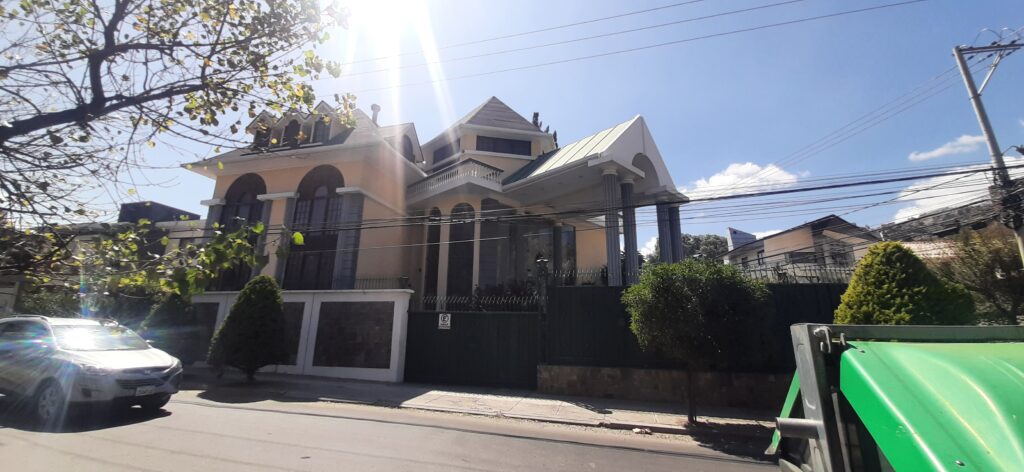
These houses have, for example, eccentric forms that account for the latest tendencies in home design. They have well-maintained gardens, several garages, large gateways, multiple security measures, beautiful arrangements, suites, balconies, pools, materials like Marmol, exclusive wood, etcetera.
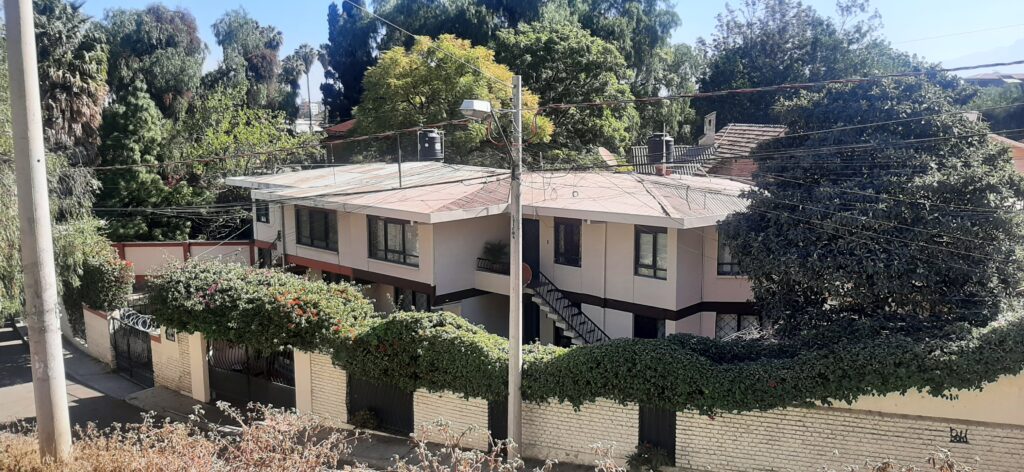
On the inside, they have air conditioning, fireplaces, big bathrooms with advanced bathtubs, a complex system of lighting, smart home devices, along other amenities. In fact, they look very similar to premium houses in the first world. But they don’t look like homes from rich people in the first world, this level of luxury is almost not present in Bolivia.
The appearance of houses according to their location in Bolivia
Now let’s see how Bolivian houses look according to where they are located inside the country.
A) Homes in cold cities like La Paz and Oruro
Most of the houses that exist in these cities, located at a very high elevation over the sea level, most of the time are going to look very orange, like large cubic orange boxes of countless bricks, this is as we said because most people in Bolivia tend to live in houses that don’t have the finishing work done, with basic designs created by masons.
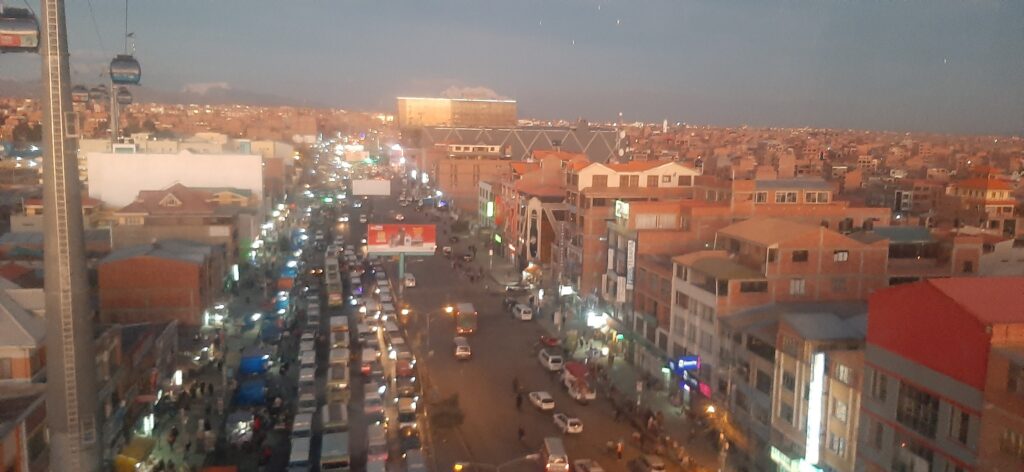
Additionally, these houses won’t show almost any garden around, they’ll occupy all the land in which they’ve been built, and usually, they’ll have multiple stories, from 3 to 5 of them, in each story 1 or 2 apartments will be placed. Houses look like boxes of bricks because, as we said, they usually are not designed by architects or building firms, but rather by the masons that build them.
In cities located in the Bolivian Altiplano, like:
- La Paz
- El Alto
- Oruro
- Potosí
There is not too much space to build houses, so people normally use all the available land and they tend to construct multiple-story buildings that don’t have finishing work done, so they look, as we said, like “multiple-story orange boxes of bricks with windows”.
Additionally in these cities, the outskirts and nearby rural areas contain houses of poor people that mostly look like small adobe houses, with a gray to brown color.
However, rich people’s houses look very similar to the ones found in 1st world countries, except for El Alto City, where rich people can make indigenous designs for their properties, like the ones shown in the image below.
Img: wealthy homes in El Alto
B) Homes in tempered cities like Cochabamba and Sucre
These cities have better climates and are not as cold as in the Altiplano, so there is a lot more space available in larger land lots, where built houses don’t need to occupy all the space.

So, homes located in cities in the tempered region of Bolivia like:
- Cochabamba
- Sucre
- Tarija
Tend to look like standalone rustic and rural homes, but a lot cheaper and more basic. These properties often have a central family home with surrounding gardens, but in all cases, a wall of bricks or a wood fence will surround the property. These homes often lack a good distribution of inner ambiances, as well as having small bedrooms, sometimes without living rooms, and also bathrooms in other places.
Nevertheless, if you visit Sucre city, you’ll find that most houses are white, this is the reason for Sucre being called the “white city” (Ciudad blanca). Homes there appear to have come out of a story, and they transmit a calm and relaxing feel to the city habitants. That’s also why this city is called the “garden city”, but not everything is flowers and roses, the Chagas Disease is also present there, which is very harmful and deadly.
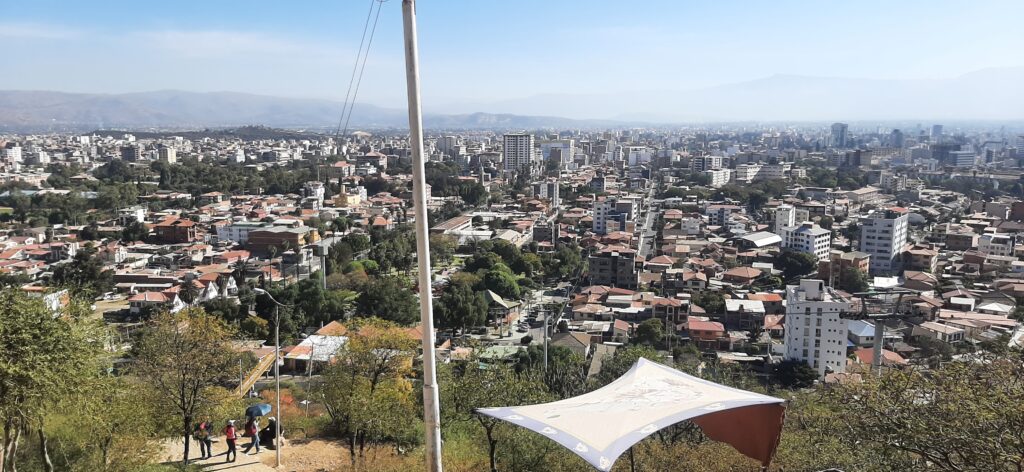
In the temperate region of Bolivia, rural houses are also made from rustic materials, like adobe or wood, they usually have natural gardens around, as well as very rustic fences that separate the house from the surroundings. On the other hand, homes from rich people living in this region are often standalone homes that look like homes in the first world, also they are luxurious departments located in the downtowns or the best neighborhoods.
C) Homes in tropical cities like Santa Cruz
Homes in tropical cities look very different from homes in the Altiplano region and in the temperate regions of the country. In these endless tropical lands, there is a lot of space to build, also there is a lot of heat as the weather is really hot. All of this results in properties looking like big gardens with a small house in the center.
Homes in the tropical region of the country (which accounts for about 40% of the total territory) and in tropical cities like:
- Santa Cruz De La Sierra
- Trinidad
- Cobija
Usually are standalone houses that are surrounded by natural gardens that are often not well maintained, as well as wrapped by wood fences or steel mesh fences. These homes, which in general belong to low to middle-class people, are often not well painted and lack finished work, so they in many cases are a mixture between orange and white and green (from the bricks and the stucco inside, and the bushy thickets outside)
Homes that are from poor people in tropical cities of Bolivia, usually on the outskirts of the city, are even made with just wood, carp, and stainless steel, calamine, and surrounded by rustic fences, as well as lacking most basic services. However, in Santa Cruz also lives the richest people of Bolivia, with homes that are quite luxurious and look like standalone homes from upper-class residential neighborhoods in the US or Canada.
D) Homes in metropolitan downtown areas
Homes located in downtown areas of main cities in Bolivia often look very antique and have designs that remember the days of the Spanish colonization. Most of these houses have been properly restored and have a high value when sold, but many others look abandoned and even dangerous.
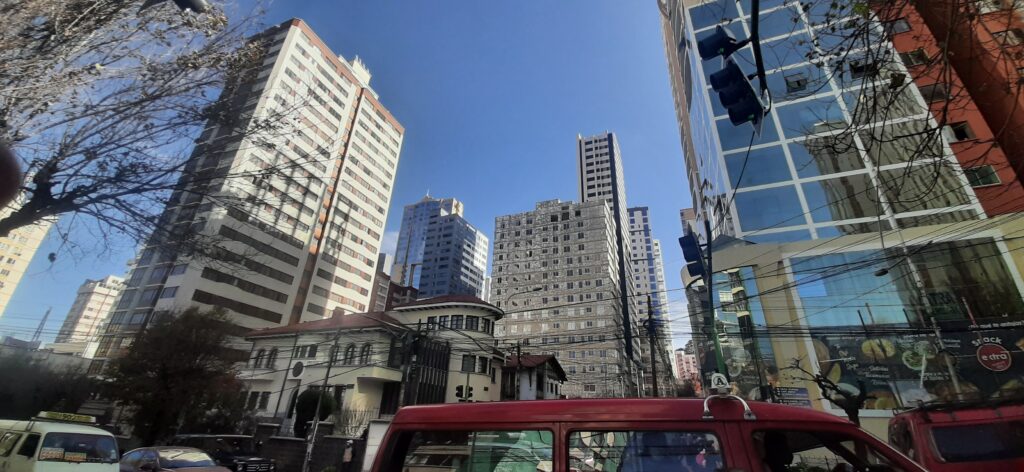
These colonial homes put a contrast to a lot of modern high-rises that are usually next to them. These skyscrapers are often blocks of apartments, but also spaces for corporations and businesses. This results in a mix of colonial houses with cutting-edge high-rises, which is often seen in downtown areas of large cities in Bolivia.
In other newer cities that were founded after Bolivia’s independence, like El Alto city, you will find that they usually have many multiple-story buildings of apartments, offices, and commercial spaces, along with high-rises in the downtown areas. Endless 4 to 6-story buildings, along with some skyscrapers will be seen in these newer urban areas.
E) Homes on the outskirts of the cities
Houses belonging mostly to poor people will be present in the boundaries of cities, so they will look modest and small. In many cases they will lack proper maintenance, they’ll be done with not as robust materials, like adobe and wood, or won’t have finishing work done and very often will lack basic home services, but usually surrounded by brick walls, steel mesh, or wood fences.
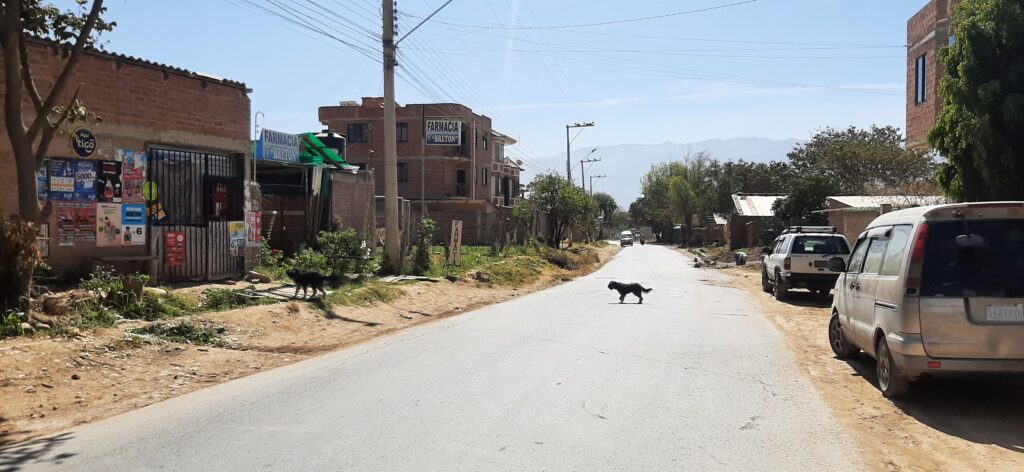
But in some cases, wealthy people are living in some neighborhoods near rural areas, and these homes have the look of vacation homes, with all the proper amenities for a comfortable resting place. This is normally seen in some neighborhoods like:
- Valencia in La Paz
- Tiquipaya in Cochabamba
- Urubo in Santa Cruz
In these wealthy neighborhoods on the boundaries of these cities, resting and vacation homes will look very luxurious.
F) Homes in rural areas
In rural areas, far away from cities and other larger towns, people usually live in homes made with adobe in both the Altiplano and tempered regions, but made with wood and bricks in rural tropical regions. These homes are often surrounded by fields and pastures, as well as livestock.
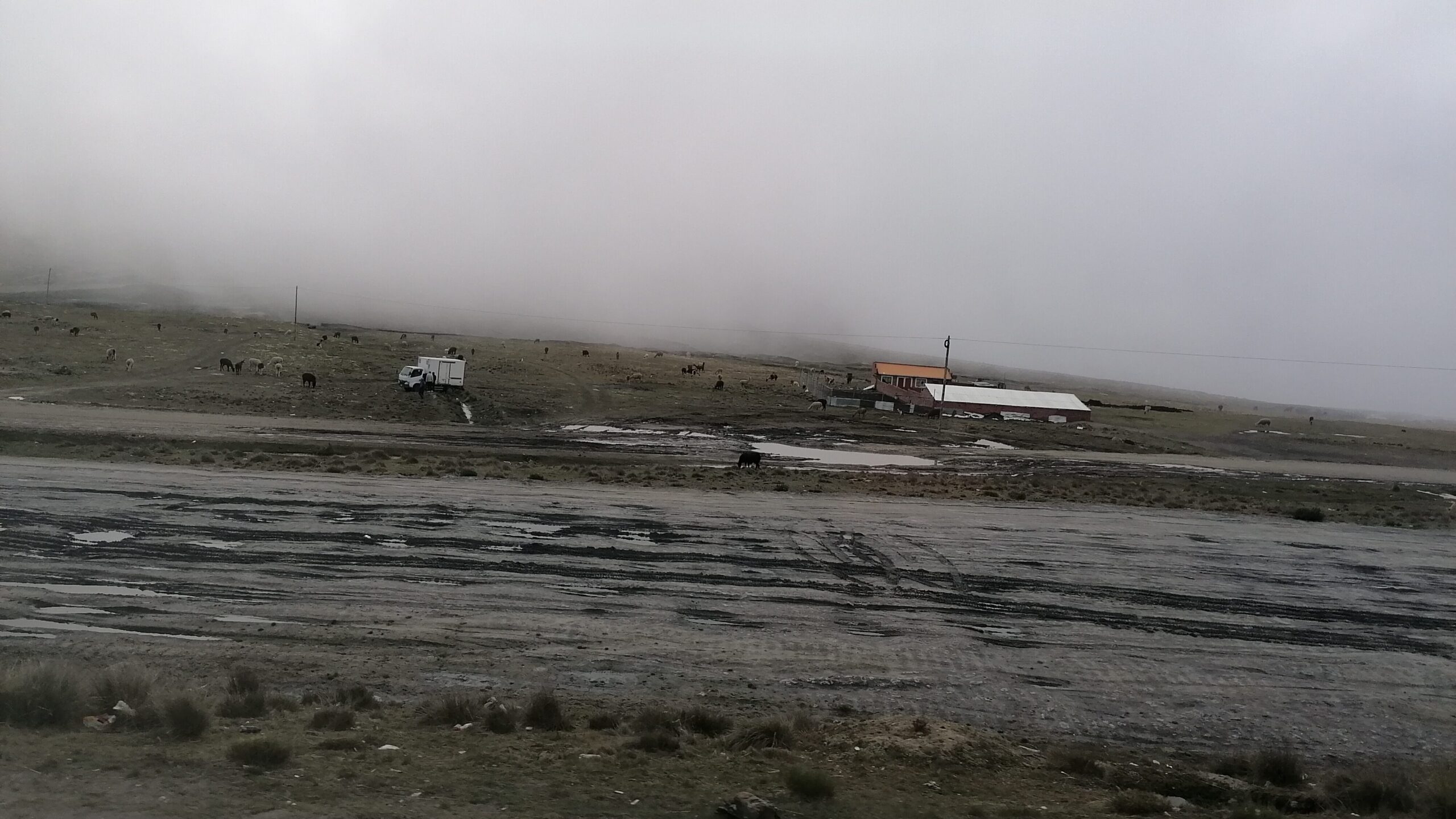
Usually, it can be seen in small towns of less than 1,000 people from time to time when visiting rural areas in Bolivia, where usually small standalone houses for one family are placed next to each other around a central main square. These towns in general won’t have more than 4 or 6 thousand feet (400m to 600m) in diameter.
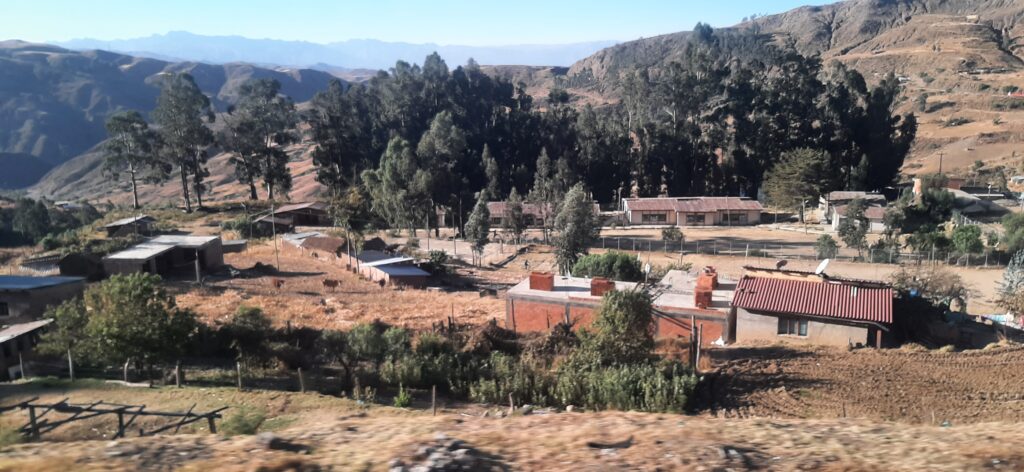
In the Altiplano most of the rural homes will be made with orange bricks or adobe (some will be painted), so towns will have a mix of orange and brown appearance. In the tropical regions, rural homes in small towns will be usually built with smaller orange bricks, wood, and stucco, surrounded by bushy grasslands, so they will look mostly green, mixed with white, orange, and brown.
G) Homes in tourist places
Homes located inside tourist places in Bolivia usually have a different look than the rest of the homes, this is because they mostly are located in:
- Very old areas of the cities, having appearances of the colonization era, like Jaen Street in La Paz, where very antique, but well-maintained homes are present.
- Unique places like the Uyuni’s Salt Flat, where some houses and hotels are even made of salt.
- Faraway towns or National Parks, like Rurrenabaque or the Eduardo Avaroa National Park, where there are no homes and only shelters, or pretty rustic homes.
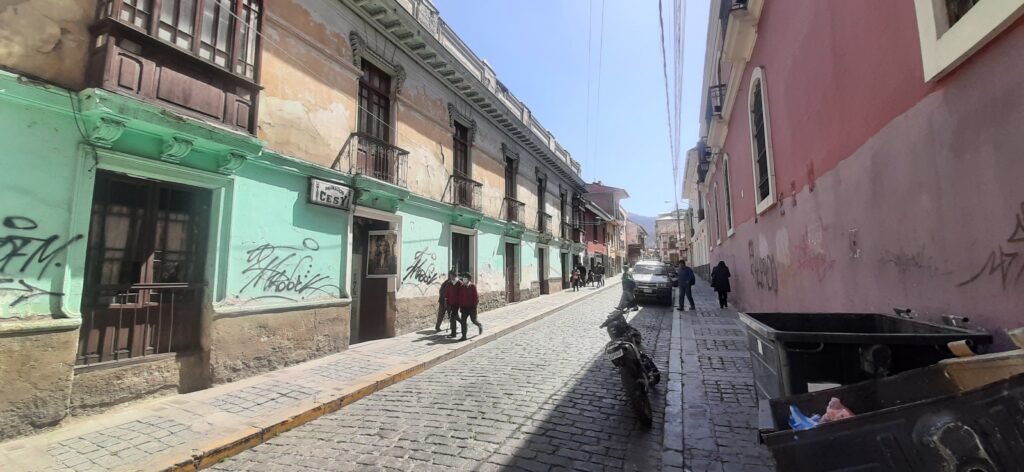
But in general, tourist places modify their appearances to be more appealing to tourists and to match the main attraction of such places.
Neighborhoods in Bolivia have a very different design than in the first-world
The urban arrangement in Bolivia is very different from what you will find in the US and Canada, it’s more similar to European cities, with everything gathered around the central part and downtown area of the city.
In the US and Canada, residential homes are very well separated from commercial and industrial areas. There is one place to live, another place to work, and another place to produce. In contrast to this, in Bolivia, you’ll find that people live where they work and in many cases where they produce.
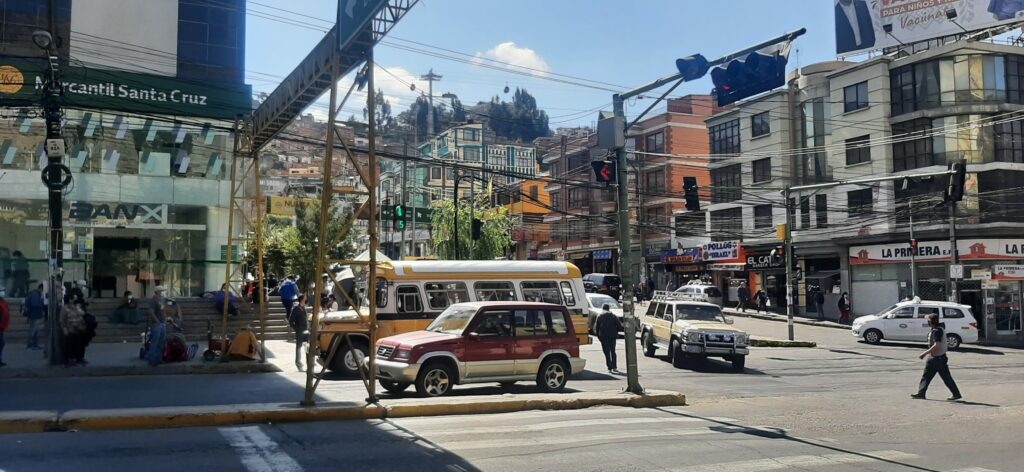
There is no distinction between residential, commercial, and industrial areas anywhere in Bolivia, so you’ll find that most of the streets are filled with businesses, stores of different kinds as well as homes, between these properties, you’ll also find skyscrapers of many stories. In downtown areas, you’ll see extremely crowded avenues and streets with large open markets, homes, and small and large businesses as well as chaotic movement everywhere.
The Bolivian urban cities in their downtown areas look mostly like European cities, but a lot poorer, and with a lot less organization than what you would find in European countries, everything is mixed, residential, commercial, and even industrial areas.
Conclusions:
In this overview of the appearance of houses and real estate in Bolivia, you’ve seen that in general major cities are arranged like European cities, but look a lot more basic and also poorer. Urban areas in Bolivia usually mix residential places with both commercial and industrial places.










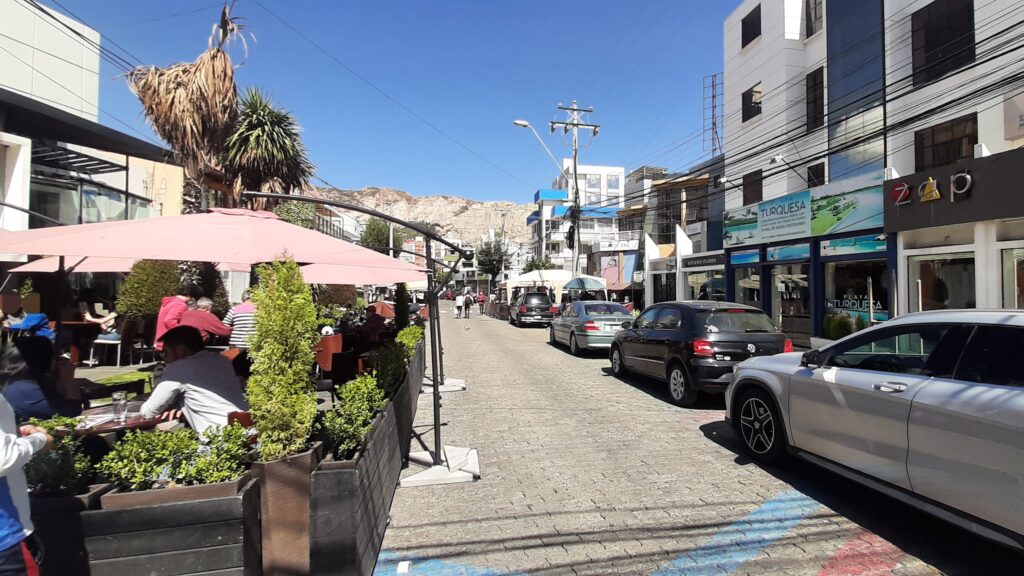
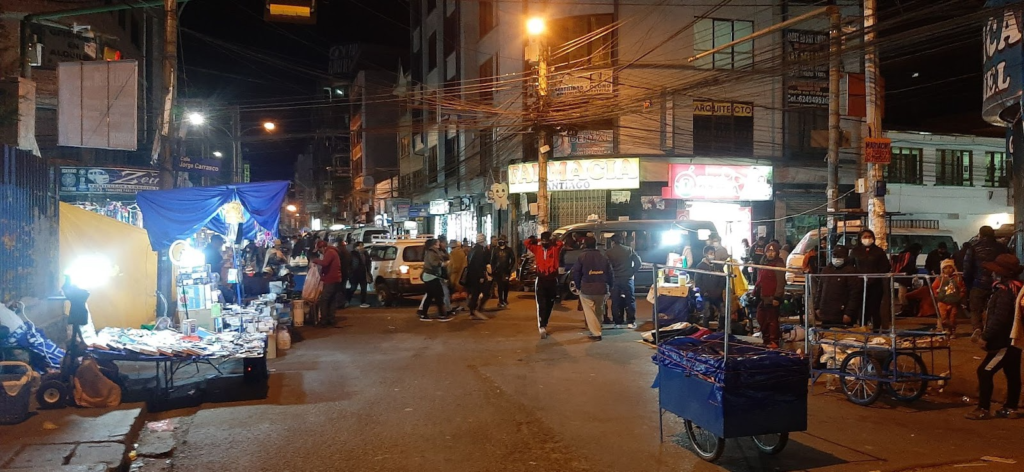

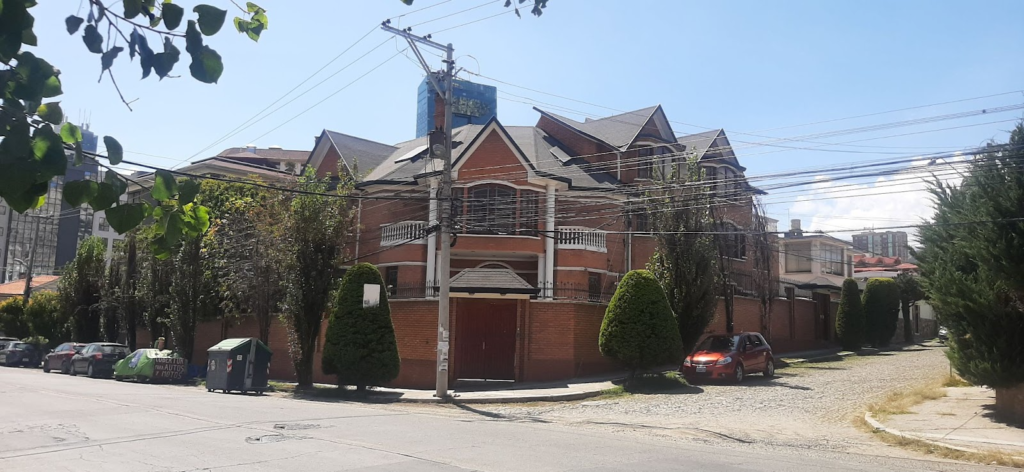


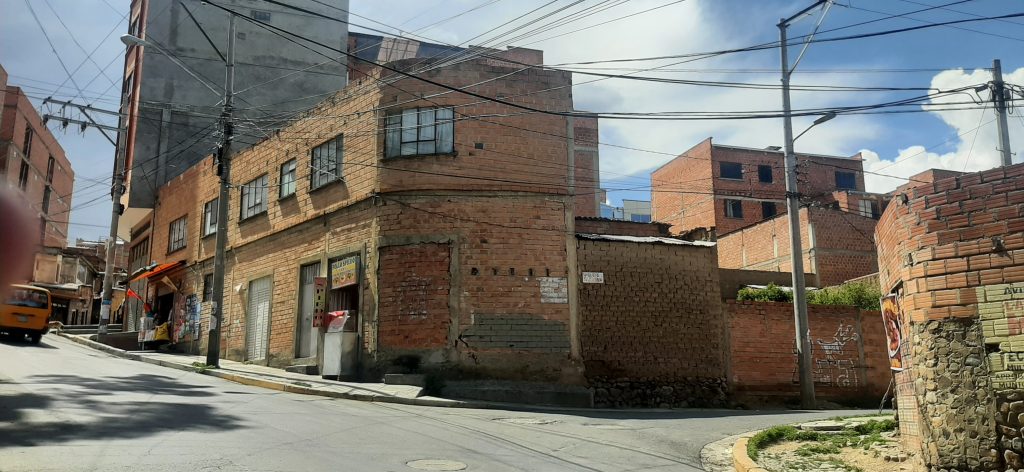







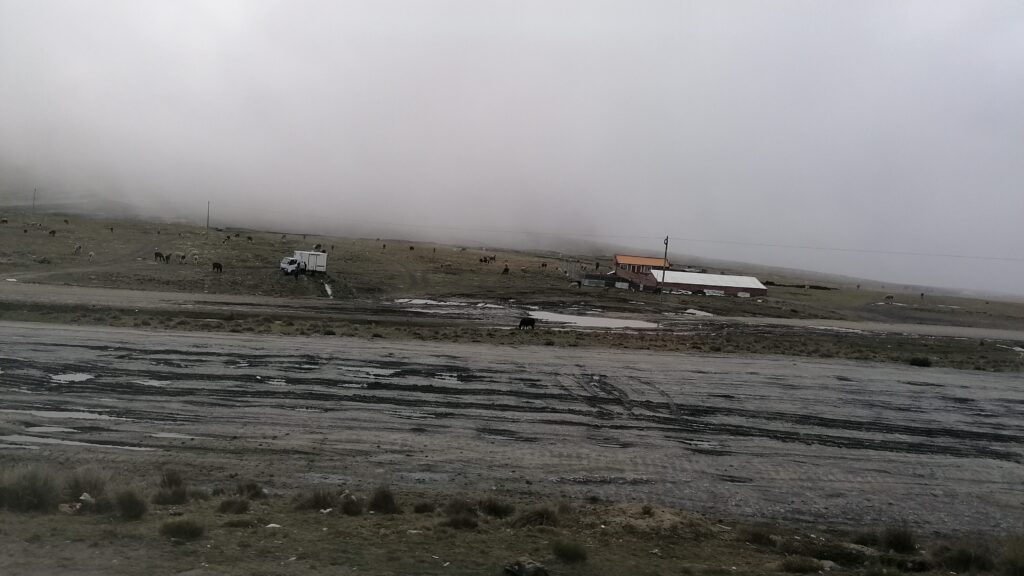
You also learned that, in general, homes look orange in Altiplanic regions, without any garden or parking lot visible (cars usually park in the street, and there are big gateways that get opened for cars in these houses). In contrast, you’ve seen that in tropical places houses appear to be central small homes surrounded by bushy gardens as well as walls of orange bricks or wood fences.
You also saw that homes from poor people are usually built with adobe bricks or wood and they look very rustic, brown or gray, small, and without even basic services. On the other hand, you’ve realized that houses in wealthy neighborhoods look like residential homes in North America and Europe, they even seem to be from upper-class people of these regions and countries.
We hope this information has helped you, and if you want to know how much it really costs to build a house in Bolivia, accounting for all the different types mentioned here, with every detailing number, visit our dedicated guide: How much does it cost to build a house in Bolivia? A full overview.
BolivianExperts.com, information about how to live, work, invest, and travel in Bolivia.


